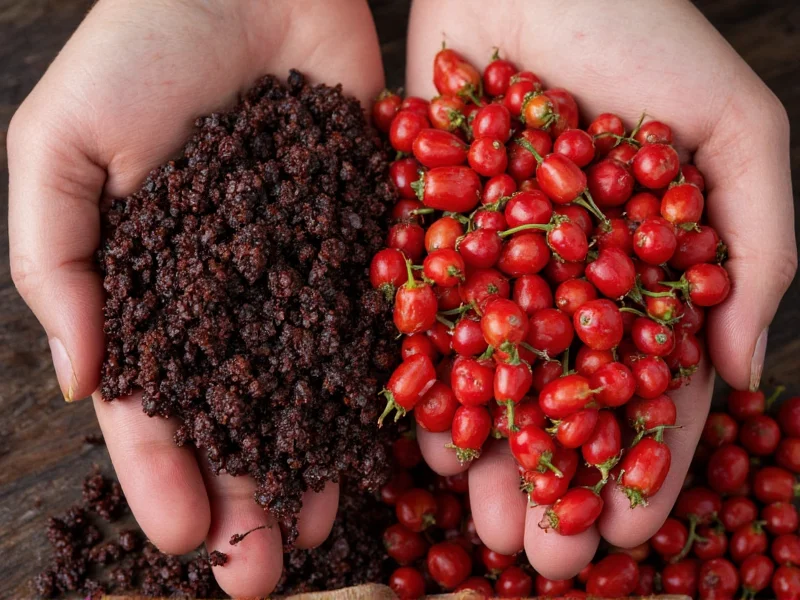Many home cooks and even experienced chefs frequently mix up pasilla and ancho peppers, creating unnecessary confusion in the kitchen. Understanding the difference between these two essential Mexican dried chilies can transform your cooking and help you achieve authentic flavors in traditional recipes.
What Exactly Are Ancho Peppers?
Ancho peppers represent the dried form of poblano peppers. When fresh poblanos ripen to a deep red color and undergo the drying process, they transform into anchos. The name "ancho" literally means "wide" in Spanish, describing their broad, flat shape.
These dried chilies offer a rich, slightly sweet flavor with notes of dried fruit, tobacco, and coffee. On the Scoville scale, anchos range from 1,000 to 2,000 units, placing them on the milder end of the heat spectrum—comparable to a bell pepper but with more complexity. Their deep reddish-brown color and heart-shaped appearance make them easily identifiable.
Understanding Pasilla Peppers
Pasilla peppers, sometimes called "pasilla bajio" to avoid confusion, are actually dried chilaca peppers. The term "pasilla" translates to "little raisin," which perfectly describes their appearance and flavor profile. Fresh chilacas are long, thin, and dark green, but after drying, they become wrinkled, dark brown to black, and develop that characteristic raisin-like taste.
With a Scoville rating between 1,000 and 2,500 units, pasillas deliver mild to medium heat. Their flavor profile features earthy, smoky notes with hints of berries and licorice. The elongated, narrow shape (typically 6-8 inches long) distinguishes them from the wider anchos.
Key Differences Between Pasilla and Ancho Peppers
| Characteristic | Ancho Pepper | Pasilla Pepper |
|---|---|---|
| Origin | Dried poblano pepper | Dried chilaca pepper |
| Shape | Wide, heart-shaped (2-3 inches wide) | Long, narrow (6-8 inches long) |
| Color | Deep reddish-brown | Dark brown to black |
| Flavor Profile | Fruity, sweet, tobacco, coffee notes | Earthy, smoky, berry, licorice notes |
| Heat Level | 1,000-2,000 SHU (mild) | 1,000-2,500 SHU (mild-medium) |
| Common Uses | Mole poblano, enchilada sauce, stews | Mole negro, salsas, adobo marinades |
Why the Confusion Between Pasilla and Ancho?
The confusion between pasilla and ancho peppers primarily stems from regional naming differences and inconsistent labeling practices. In some parts of the United States, particularly in California, dried poblanos (anchos) are sometimes incorrectly labeled as "pasilla." This mislabeling has perpetuated the misunderstanding that these peppers are interchangeable.
Additionally, both peppers appear in many traditional Mexican dishes, leading some to assume they serve identical purposes. While they can sometimes substitute for each other in a pinch, understanding their unique characteristics allows for more authentic and flavorful cooking.
Culinary Applications: When to Use Each Pepper
Ancho peppers shine in recipes requiring a sweet, fruity base note. They form the foundation of mole poblano and work beautifully in enchilada sauces, stews, and braises. Their mild heat makes them accessible to those sensitive to spice while still providing complex flavor.
Pasilla peppers excel in dishes where earthy, smoky depth is desired. They're essential in Oaxacan mole negro and traditional adobo sauces. Their slightly higher heat level and distinctive flavor make them ideal for salsas and marinades where you want more pronounced chili character.
Substitution Guidance
While not identical, you can substitute between these peppers when necessary. If substituting ancho for pasilla, expect a sweeter, less earthy result. When using pasilla instead of ancho, anticipate slightly more heat and a different flavor profile.
For the most accurate substitutions:
- Replace ancho with mulato pepper (closest flavor match)
- Substitute pasilla with guajillo for similar heat with brighter flavor
- Use a combination of ancho and chipotle for pasilla's earthy-smoky profile
Shopping Tips for Authentic Results
When purchasing dried chilies, look for pliable peppers with deep, rich color—avoid brittle, faded specimens. For true pasilla peppers, check for the long, narrow shape and dark brown to black color. Authentic anchos should be wide and heart-shaped with reddish-brown hue.
Reading labels carefully helps avoid the common pasilla-ancho mix-up. In Mexican markets, you'll typically find them correctly labeled as "ancho" and "pasilla" or "pasilla bajio." When shopping in mainstream American grocery stores, be particularly vigilant as mislabeling occurs frequently.











 浙公网安备
33010002000092号
浙公网安备
33010002000092号 浙B2-20120091-4
浙B2-20120091-4